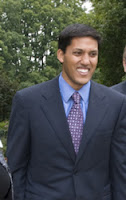“By one count, there are now over 140 goals and priorities for U.S. foreign assistance,” Senator John Kerry said during the
nomination hearing for USAID Administrator-designate
Rajiv Shah. If Shah is confirmed, his principal tasks will be moving development out from the shadow of defense and diplomacy and bringing definition to USAID’s mission.
“USAID needs to have a strong capacity to develop and place and deploy our civilian expertise in national security areas,” Shah said at his nomination hearing. USAID “has a responsibility to step up and offer very clear, visible, and understood strategic leadership,” as well as clarify “the goals and objectives of resources that are more oriented around stability goals than long-term development goals.”
A difficult task—and whether Shah wants it or not, he’ll get plenty of help from State, the Obama Administration, and Congress.
State Department Reviews Diplomacy and Development
The State Department’s Quadrennial Diplomacy and Development Review (QDDR)—launched in July by Shah’s impending boss, Secretary of State Hilary Clinton—will certainly inform his USAID vision. Modeled after the Defense Department’s Quadrennial Defense Review (QDR), the QDDR is designed to enhance coordination between USAID and State.
Anne-Marie Slaughter, director of policy planning at the State Department and co-leader of the review process, laid out the QDDR’s specific goals at a recent event hosted by the Center for American Progress:- Greater capacity for, and emphasis on, developing bilateral relationships with emerging nations, working within multilateral institutions, and working with non-state actors
- Capability to lead “whole-of-government” solutions to international challenges
- More effective coordination between top-down (diplomatic) and bottom-up (development) strategies for strengthening societies
- Greater capacity to launch on-the-ground civilian responses to prevent and respond to crises
- Flexible human resource policies regarding the hiring and deployment of contractors, foreign service officers, and development professionals
These goals fit under Secretary Clinton’s vision of development and diplomacy as “equal pillars.” Slaughter cautioned, however, that they represent a “100 percent successful” outcome for the QDDR, and its final form and recommendations remain uncertain.
Obama Administration, Congress Also Join In
Details on the Presidential Study Directive (PSD) on Global Development Policy—outside its broad mandate for a government-wide review of U.S. development policy—are similarly sparse. The directive’s fuzzy parameters leave open the potential for its intrusion into the QDDR’s stated objectives.
But from what little is available, both the QDDR and PSD appear to be part of complementary efforts by the Obama administration to elevate development’s role in U.S. foreign policy, using whole-of-government approaches.
Lest Congress be left out, each chamber is working on its own development legislation. Senators John Kerry and Richard Lugar’s Foreign Assistance Revitalization and Accountability Act of 2009 (S. 1524) seeks “to strengthen the capacity, transparency, and accountability of United States foreign assistance programs to effectively adapt and respond to new challenges.” The act would reinforce USAID by naming a new Assistant Administrator for Policy and Strategic Planning, granting it greater oversight over global U.S. government assistance efforts, and strengthening its control over hiring and other human resource systems.
Congressmen Howard Berman and Mark Kirk’s Initiating Foreign Assistance Reform Act of 2009 (H.R.2139) would require the president to create and implement a comprehensive global development strategy and bring greater monitoring and transparency to U.S. foreign assistance programs.
Successful legislation in the Senate and House could pave the way for the reformulation of the Foreign Assistance Act of 1961, whose message has been rendered complicated and sometimes contradictory by decades of amendments.
And all these ambitious efforts are complicated by the involvement of 25 independent government agencies in U.S. foreign assistance—a formidable challenge to any administrator.
Photo: Courtesy of the USDA.

 A Publication of the Stimson Center.
A Publication of the Stimson Center.







